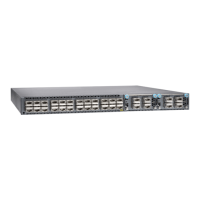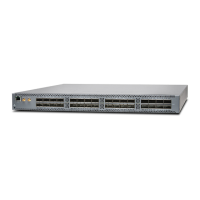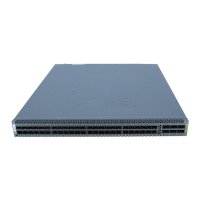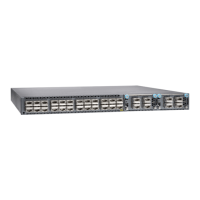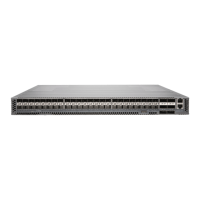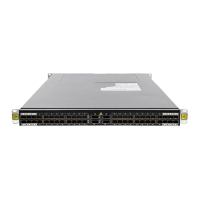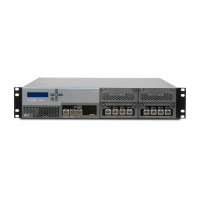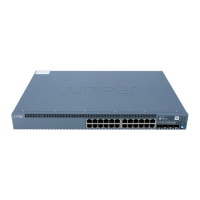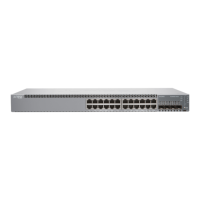NOTE:
•
The SFP-T transceivers are supported only on top or bottom ports, upto a maximum of 24 ports.
•
The SFP28 speed can be applied only for individual quads (four ports). The speed cannot be
configured for a single port.
•
The native 25-G ports available from port 0 through port 47 and can operate in 1-G, 10-G, or
25-G speeds based on the configuration set at the quad level. The QFX-512048Y switch offers
10-G interface support by default. You need to manually configure 1-G and 25-G interface speeds
in order to support 1-G and 25-G optics when required. To support 10-G speed for the same
port slot, you need to delete the 1-G/ 25-G port configuration that was set earlier.
•
For QFX5120-32C, you cannot configure four independent 10-Gigabit ports or four independent
25-Gigabit ports using breakout cables on port 31. However you can configure two independent
50-G ports on this port.
Both the QFX5120-32C and QFX5120-48Y offer :
•
A 2.2 GHz quad-core Intel CPU with 16 GB memory and 64 GB SSD storage
•
Feature-rich automation capabilities with support for Python and Zero Touch Provisioning (ZTP)
•
Support for Virtual Extensible LAN (VXLAN) as an L2 or L3 gateway and Open vSwitch Database (OVSDB)
protocol as an L2 gateway
•
Advanced Junos OS features such as EVPN, BGP add-path, MPLS, L3 VPN, and IPv6 6PE
Figure 5 on page 24 show the front panel of a QFX5120-32C Switch.
Figure 5: Front Panel of a QFX5120-32C Switch
g051100
432
6 5 37
1
QFX5120-32C
5—1— Console portQSFP28 ports
6—2— Chassis status LEDManagement port
7—3— Reset buttonSFP+ ports
4—USB port
24

